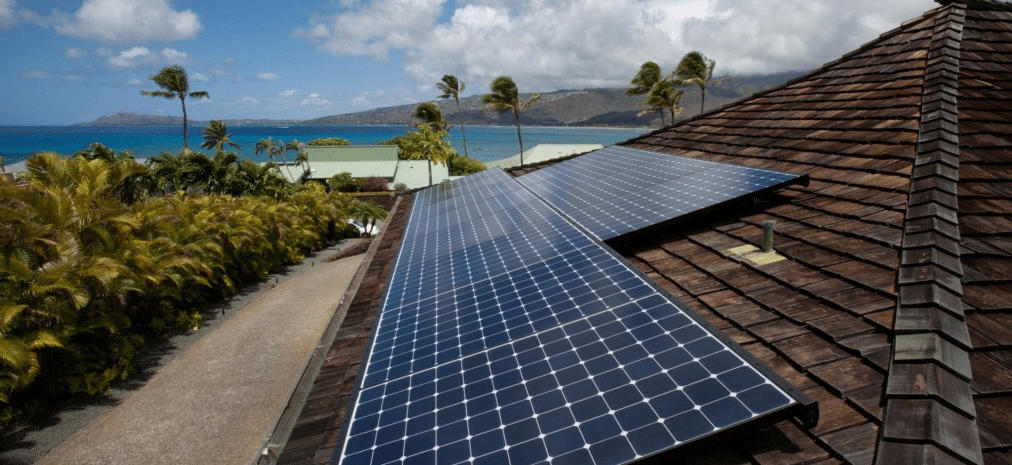As the entire country sits on the edge of an energy and climate crisis, the mainland is looking to Hawai‘i on clean energy policies. Perhaps that’s why the Western Conference of Public Service Commissioners chose to have its annual educational conference in Honolulu this year, with a focus on clean energy innovation and emerging technologies.

Image: Hawaii.gov
Last week, the Aloha State hosted these energy regulators and leaders to discuss the policies and regulations needed to ensure a reliable but also zero-carbon future. But the most valuable lesson was just beyond the conference halls. Hawai‘i’s solar energy policies are a model for the nation as we move toward 100% clean energy by 2045. Though getting solar right wasn’t an easy, or even linear path.
In 2015, our public utilities commission decided to end net-energy metering, or NEM, the billing practice of crediting solar homeowners for the excess power they give back to the electric grid. This was a huge financial blow to families who wanted to choose solar as a more affordable option to notoriously high traditional energy bills Hawaiians face.
Ending NEM for solar customers resulted in an 80 percent decline in new solar installations in certain parts of the state. The number of active solar companies on Oahu, the state’s largest market, dropped from 300 in 2015 to just 98 last year, according to the Hawai‘i Solar Energy Association (HSEA). It’s worth noting that this type of post-net metering falloff in the residential market isn’t exclusive to Hawai‘i, with Nevada and South Carolina experiencing similar declines after their respective NEM restrictions.
But what Hawai‘i realized in years following is that rooftop solar, especially when paired with battery systems, can be a powerful solution to drive to a 100% clean energy grid. Hawai‘i regulators, utilities, and industry have been working together to develop a program to leverage these distributed resources, and restore a full value when rooftop solar is exported to the grid.
The Hawai‘i Public Utilities Commission (HPUC) is finalizing a program that will allow Hawaiian Electric utility to utilize 50 megawatts of rooftop solar plus batteries to help provide clean power as Oahu island’s last coal-fired power plant is scheduled to be shut down by September 2022. In this program, enrolled home solar and battery customers will receive an upfront incentive to encourage enrollment, a monthly payment based on capacity of the battery, and a re-established fair export value for solar electrons provided to the grid for several hours every day.
This program demonstrates the success of radical collaboration: utilities, stakeholders, and industry leaders work together to make a more resilient, renewable, and local energy system. By advancing solar and storage at this level, we’re well on our way to meeting our aggressive goal of 100% renewable energy generation within less than two decades.
But what makes me proudest of these forward-leaning clean energy standards is how they came about through innovative cooperation between what might be seen as traditionally opposed parties. Valuing and paying for the benefits of distributed resources was revived thanks to an unlikely partnership between Hawaiian Electric, clean energy developers, and stakeholders.
I say, “unlikely” because across the country, investor-owned utilities are far too often at odds with home rooftop solar and storage installers and advocates. Take California for example, where utilities are supporting a proposal from California regulators that would impose a monthly tax on anyone who adds rooftop solar – upwards of $650 each year on a single household, depending on system size.
This type of proposal is not only making access to resilience solutions like solar and batteries more difficult for families, but as we found out in Hawai‘i, it will make it more difficult to reach clean energy goals efficiently and affordably.
I urge our friends in California and beyond to look at not only our accomplishments but our missteps. Ending NEM nearly killed solar for us, and our clean energy goals with it. Thankfully, it appears states and territories across the US are paying attention to at least protecting families’ right to self-generate clean energy.
An Arkansas judge just opted to protect households from a solar tax and NEM cutbacks. Puerto Rico recently rejected an arbitrary solar tax. Even Florida Republican Gov. Ron DeSantis vetoed a bill that would allow utilities to charge excessive fees on rooftop solar customers.
Hawai‘i is proof that the impossible can be done; utilities and distributed energy companies can not only compromise, but collaborate, on innovative solutions that are beneficial to the grid, all ratepayers, and the environment. So, as energy leaders continue discussing renewable solutions, I urge them to emulate our successes rather than our past mistakes.
The views and opinions expressed in this article are the author’s own, and do not necessarily reflect those held by pv magazine.
This content is protected by copyright and may not be reused. If you want to cooperate with us and would like to reuse some of our content, please contact: editors@pv-magazine.com.








I live in California where the utility push back has been ongoing, but the politics has been able to hold them back from destroying grid tied rooftop solar so far. However, Grid Tied Solar panels, without batteries, depends on electricity produced from electrical storage or fossil fuels to be used at night when the sun does not shine. If the utilities do get what they want and kill the Net Metering Programs, off-grid solar would be the next best thing. Instead of the grid absorbing excess power and then supplying back at night, let batteries do the same job as the grid does and only tie to the grid when the batteries are low, and the sun is not shining
. The secret is having a big enough batteries to do the job. I built such a system and used 8000-amp hours of 12-volt lead acid batteries matched to an 8,000-watt solar panel system. Since all batteries have a true range of usability of about 70%, my 8,000-amp hours is only 5600-amp hours of usable full power energy to power the six 3000-watt pure sine wave inverters that power my home. For those who think in kilowatt hours, 5,600 X 12 = 67,000-watt hours or 67 kilo watt hours. One Tesla power wall is about 12.4 usable kilo watt hours, so my system is equivalent to having 5 of them. Those batteries can be charged by Generators, utility power threw battery chargers or solar panels with charge controllers and even wind power if it was available. The nice thing about lead acid batteries is they cost 75% less than lithium ion so for the price of just one power wall, I have the power availability of 5 power walls for the same price. The deep cycle Marine/ RV batteries have been used in motor homes and watercraft for years and have many low-cost inverters and charge controllers available and can be installed and wired by the homeowner with little or no knowledge of electrical installations. Most commercial solar panel companies have the skills to also install an off-grid system but prefer to use high voltage Power Walls because of the higher profits and low installation times to finish the job. If NEM-3.0 is ever passed in California, doing off-grid solar would be the only way the rooftop solar industry could survive.
Tesla has already made off grid solar systems available to their customers in Hawaii and other states that have destroyed on-grid solar so check out their web site and see what they have done for homeowners in Hawaii.